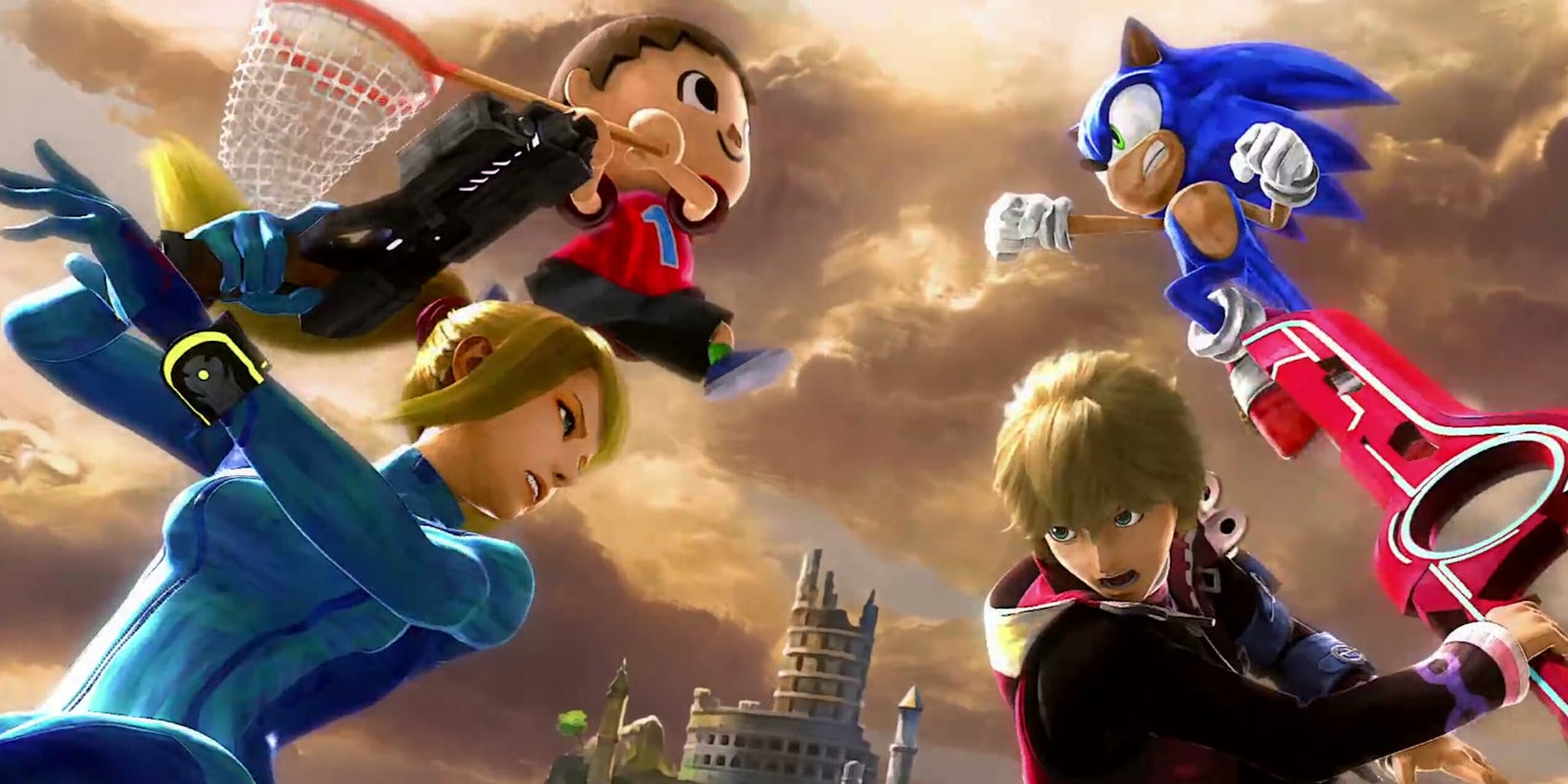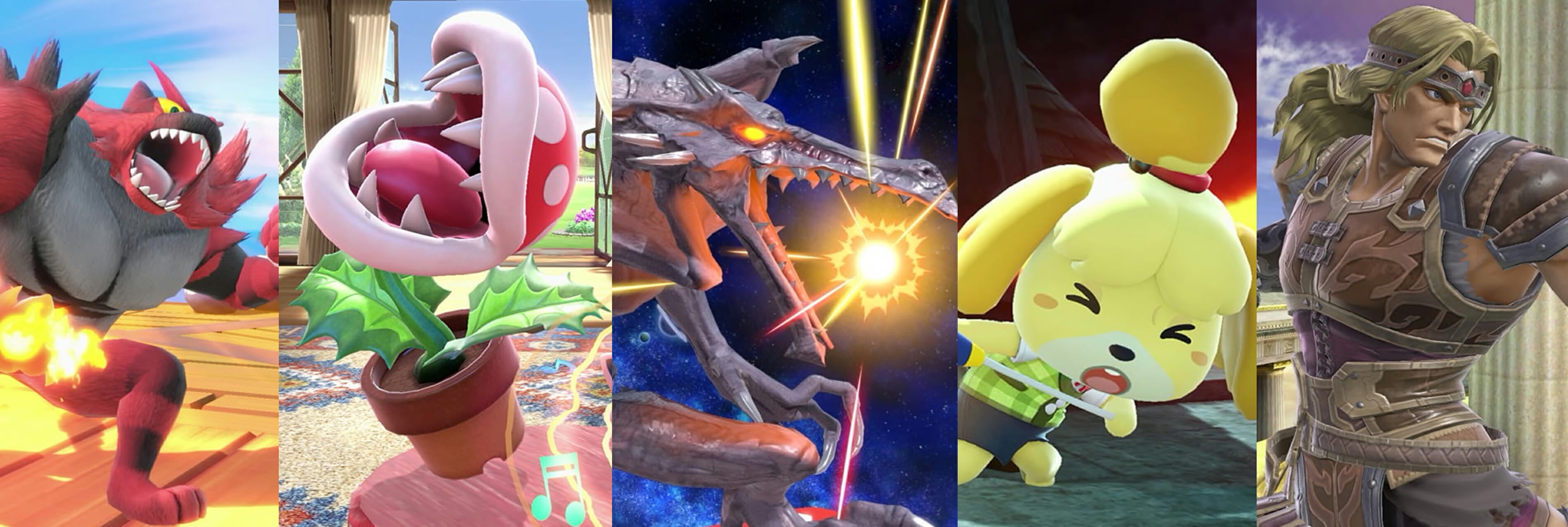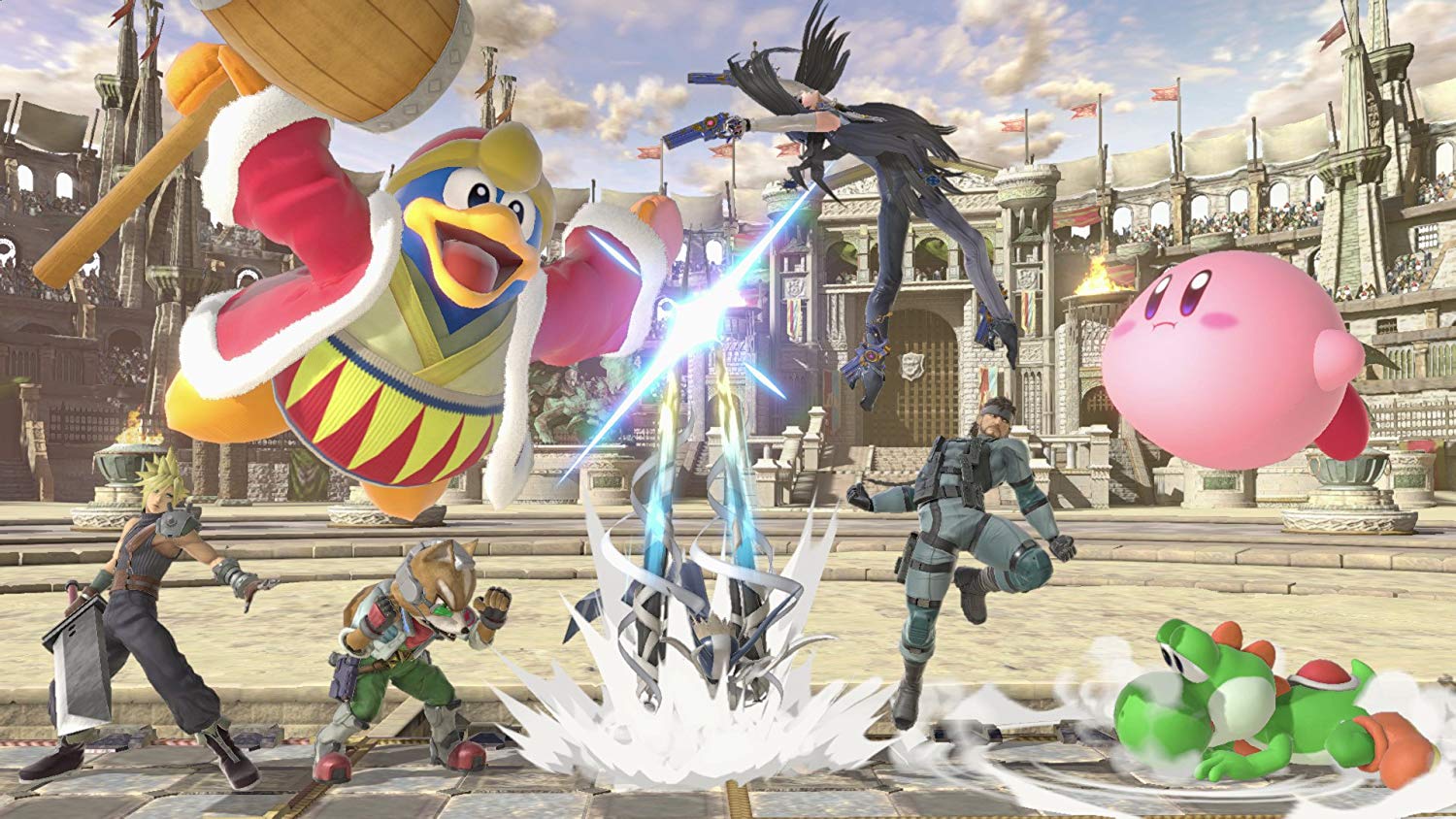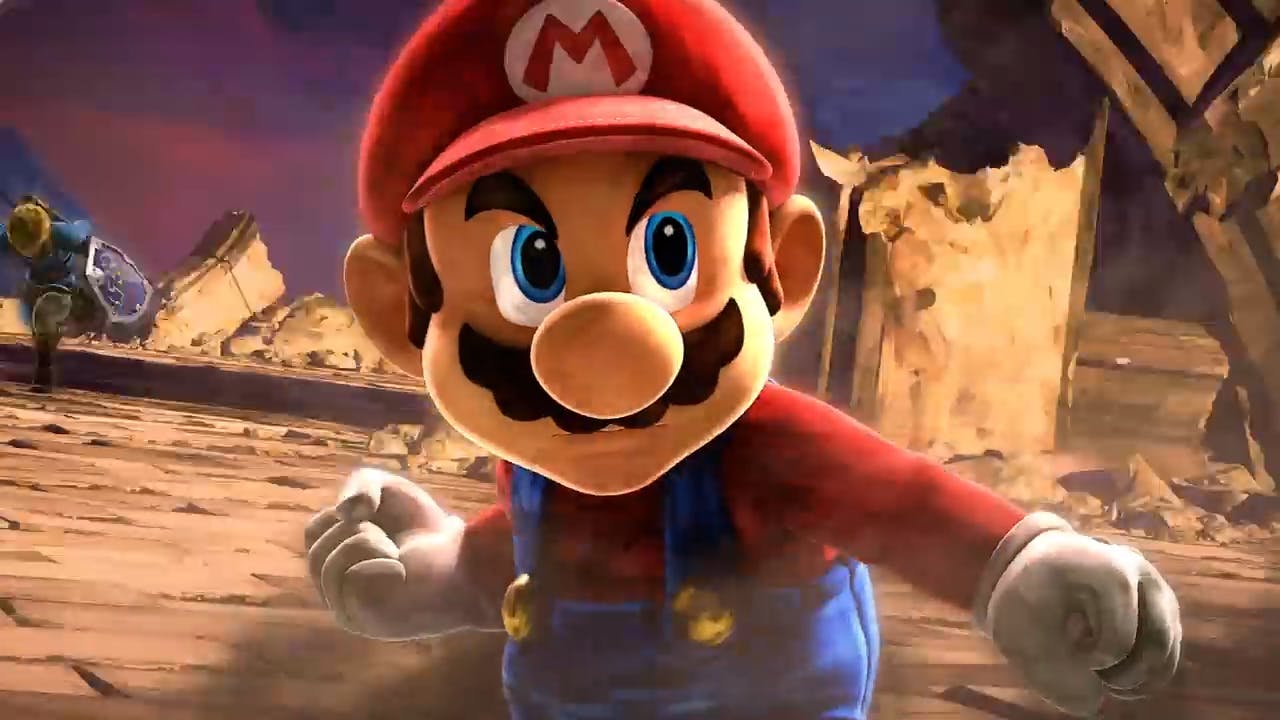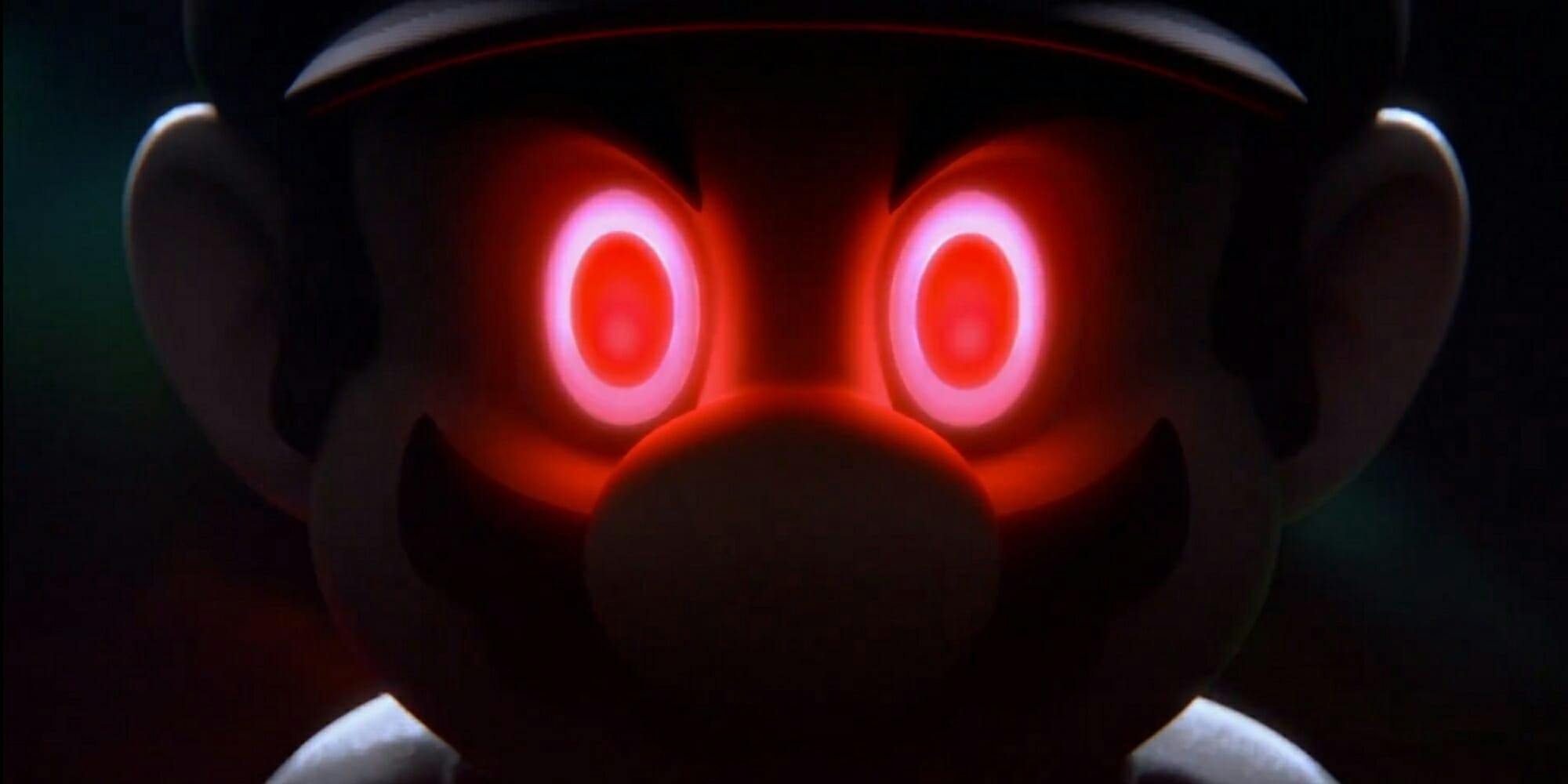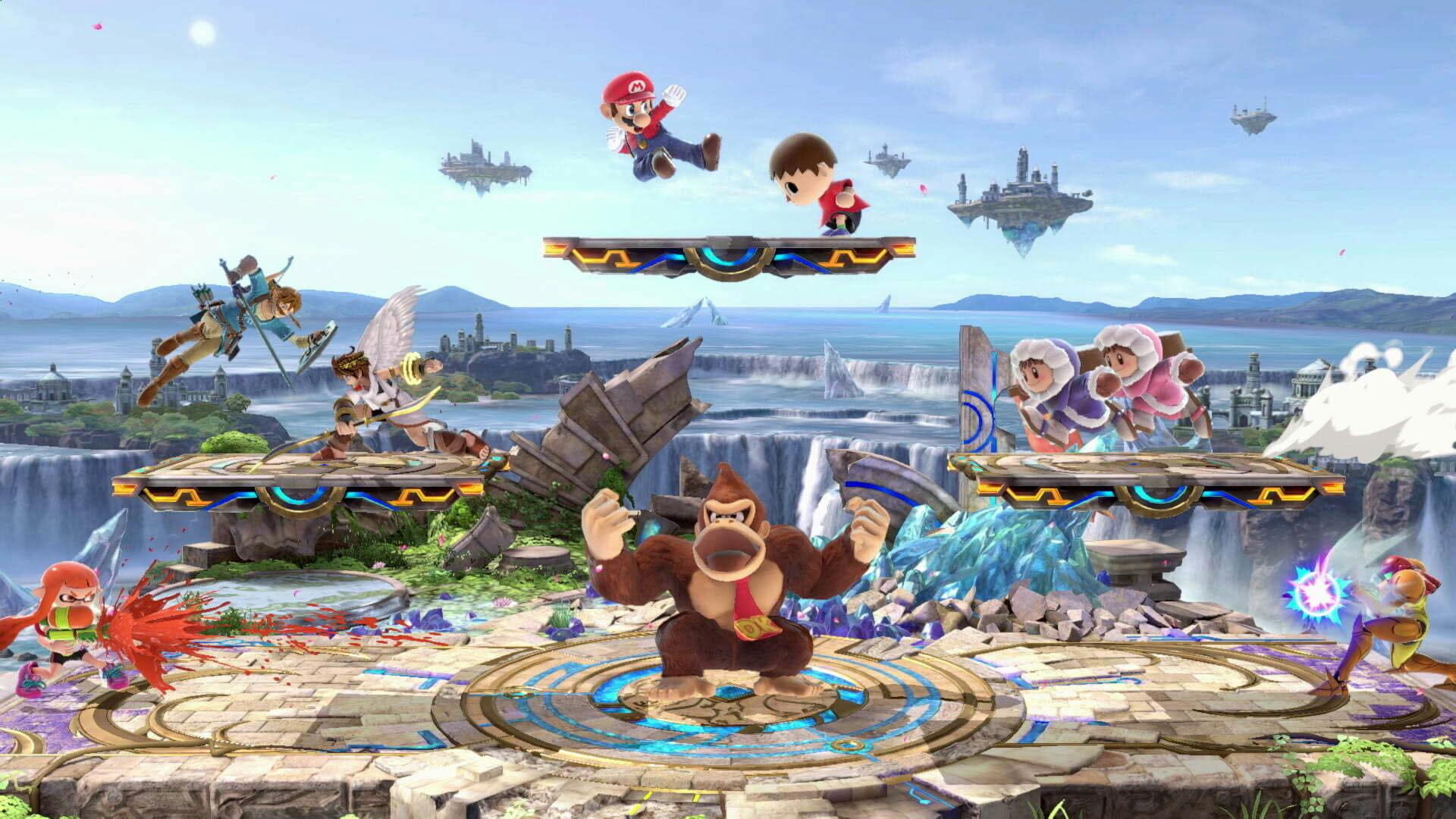With every Super Smash Bros. game, players are given an empty canvas.
Gathering the biggest names in Nintendo’s history, this chaotic event never plays out the same way. One can change characters, tweak mechanics, edit item spawns, control stage platforms, and alter even the most minute specifics of combat to truly tailor the experience to their taste. So it’s easy to understand why Smash is such a beloved franchise. Accommodating competitive and casual players alike, the game was designed in a way that anyone can pick it up, but it’s nuanced enough to inspire years of in-depth analysis. Blurring the line between a frenetic party experience and a skill-intensive fighting game, Super Smash Bros. is truly one of a kind.
Nothing speaks to this more than a commercial for the first entry. It felt like such a novelty to watch characters from separate franchises operating as one, housed under the same roof. Where that crossover was an initial promise, it built the foundation for a bombastic fighting game that would remain relevant for over two decades.
But the main attraction has always been the same: watching iconic heroes and villains come together to trounce one another in combat. The depth of legacy observed in recent iterations is enough to please the most hardcore historian—and Ultimate sets the bar higher than ever before.
To start, every single fighter that has ever been represented in the franchise’s near 20-year history has returned, with no exceptions. Adding in some long-requested fan favorites, the roster tops out at an unbelievable 74 playable characters. Nearly a dozen of these fighters are guests from titles that weren’t even developed by Nintendo but are adored by fans all the same.
Some of the most wonderfully bizarre crossovers I’ve ever seen are brought to life in this game. Final Fantasy VII’s Cloud can club Donkey Kong on the head with a Poké Ball while fighting on a moving starship, and it’s just a normal round. The level of detailed representation and legal logistics is enough to make the head spin.
Ultimate is clearly meant to deliver the most intense fan-service possible, and it does. More than that, this Super Smash Bros. contains an exhaustive amount of content that never grows stale and offers something for every kind of player who may approach it.
Standard battles will give way to new unlocks over time, in a seemingly random order. Players who just want to get the roster completed in the fastest way possible to play with friends have their work cut out for them. For those who cherish the experience of grinding battles against waves of new faces, it’s all good news. Unlocking every one of the playable characters could take up to 20 hours of honest-to-goodness smashing.
A staple of the single player experience is the return of Classic Mode. You choose a single character and embark on a route of fights that ramp up in intensity. Ultimate’s iteration features a unique theme for each fighter that often calls back to their personal backstory. Ryu emulates his Street Fighter origins in a gauntlet of one-on-one brawls, while Young Link’s quest only features enemies, items, and music from The Legend of Zelda.
While these custom paths are entertaining to watch unfold, there are some repetitive elements at play. A score-attack bonus stage is featured on every route, and watching the credits roll after every cleared attempt grew grating. But even with those minor frustrations, Classic Mode is a great showcase for all the elements of standard play, and a reliable way to clear challenges and unlock characters.
Outside of that, authored content is limited to things like hundred-man marathons and timed challenges. The bulk of Ultimate’s menus help navigate a standard match, with more options than ever before. Training has been built out to offer control of combos and launch distance, allowing you to learn a character with in-game resources like never before. I tested almost every brand new fighter’s attacks with the frame-by-frame camera offered here, perfect for those looking to master timing and complicated moves.
Custom tournaments return as well, but I was more drawn to new additions. Smash Strike finally allows you to bring a pool of fighters into one match and change control as you lose stock. This mode provides a tense, fiercely competitive challenge that alters the strategy of a typical match. Likewise, Smash Down tests players’ skill by running down the entire roster one character at a time. If your opponent picks your favorite character, they’re unavailable to you, but you can stymie their plans in the same way. It makes for a game of cat-and-mouse that, again, allows for predictive tactics that have never before been present in Smash Bros.
Even with all these options and modifiers, Super Smash Bros. Ultimate doesn’t update its foundation significantly. Movement feels slightly faster than the Wii U entry, but with a layer of directional control that calls back to the beloved Melee. Such tiny details are likely to go unnoticed by the wider audience, but I feel that Ultimate controls better than any Smash game since the GameCube.
Characters’ damage is now represented by decimal percentages, and trails of smoke signify when one is ready to be launched off the screen. Flashy, cinematic closeups cut in on dramatic hits, and of course, the over-the-top Final Smash mechanics make for thrilling moments.
The foundation of Ultimate’s gameplay is undeniably, and unapologetically, Super Smash Bros. It’s hard to imagine this entry was built with the intention to win over those who weren’t already enamored with the series, but for those who are, it is a cause for celebration.
Perhaps the single biggest change in Ultimate, though, is a deeply customizable and wildly inventive layer of role-playing. Spirits essentially amount to stickers that offer stat changes and special bonuses based on the character they represent.
Some may make players faster, while others negate stage hazards like lava or heavy gravity. Collecting various characters reveals some deep cuts and delightful callbacks to franchises from all over the world. The unique scenarios Spirits can be unlocked from vary across a few different modes, but the setup is almost always the same.
One of the available fighters has been “possessed” by the Spirit character, granting new abilities represented by a color swap, stage selection, or even item loadout. There’s honestly no chance every Spirit battle will be recognizable to all players, with a shocking amount of detail given to the setup for these various fights. Anything from the Pokémon or Metal Gear series brought a smile to my face, with even the most obscure scenes given some attention.
There are more than a thousand custom Spirits to be found, but thankfully you’re never under pressure to obtain them all. Battles rotate out on a timer, constantly offering a fresh set of challenges. Beating these fights “frees” Spirits from the board and adds them to your collection. From there, each can be powered up, mapped to a team, or taught new skills.
Spirit management runs deep, with so many different elements to keep track of. It can certainly seem overwhelming at first, but I was more than happy to let the game recommend my loadout for certain battles.
Such scenarios play a crucial role in World of Light, this game’s idea of a Story Mode. While not as cinematic as Brawl’s Subspace Emissary, this adventure is surprisingly long and thoroughly challenging. Again, the roster shrinks with only Kirby available at first. Through a gauntlet of Spirit battles, you slowly regain control of every character and build up the bank of Spirits in your collection.
World of Light doesn’t offer any changes to the core gameplay of Super Smash Bros. Ultimate, but it does provide dozens of hours to spend with unique, difficult combat situations. Traversing the board-game–inspired map can be arduous, but the overall experience is well-suited to quick sessions.
Bouncing back and forth between all these various modes makes for a constant stream of rewards, unlocks, and colorful messages. To play Super Smash Bros. Ultimate is to be inundated with joyful references and meaningful character appearances.
Flaws in this package are minor, but hard to ignore. For example, online matchmaking has never been Nintendo’s strong suit. Ultimate does a lot to improve joining a lobby for quickplay, but connecting with friends is painfully difficult. And while you’re allowed to build custom rule sets to pare down the overwhelming options available, you’re rarely placed in a match that adheres to what you’ve searched for.
Likewise, the massive roster may feel cheapened by the fact that a lengthy grind waits right out of the box. To get access to every character as fast as possible, players will either have to cheat the game’s internal memory—like two hours of resetting the console after every battle—or submit themselves to a wealth of repetition.
But there’s no denying the palpable triumph of Super Smash Bros. Ultimate. An ambitious, far-reaching project, it feels like years and years of dreams come true. A game with this number of characters, songs, stages, bosses, and callbacks simply feels like it shouldn’t exist. It’s hard to imagine a better Super Smash Bros. game, but with more content already on the way, Ultimate will continue to top itself for the foreseeable future. For now, it’s impossible not to love what has been so carefully crafted as Nintendo’s finest multiplayer game ever.
4.5/5
Super Smash Bros. Ultimate is available now on Nintendo Switch.
